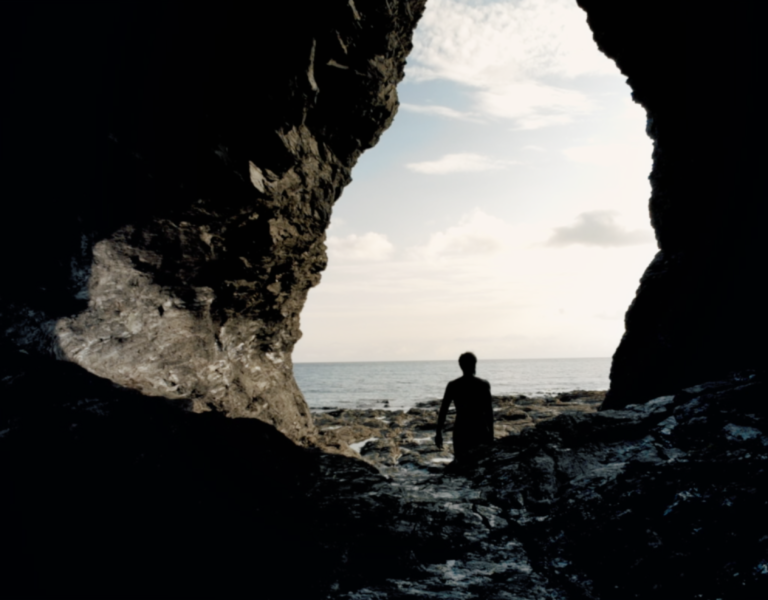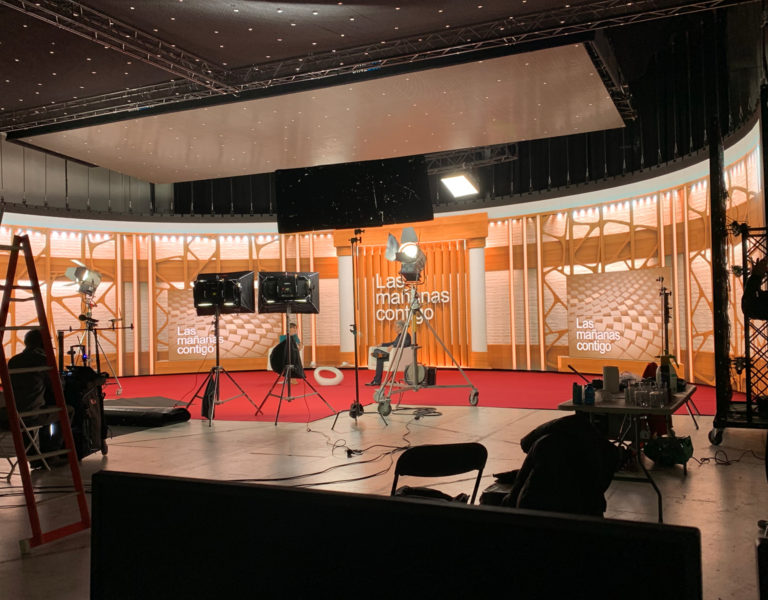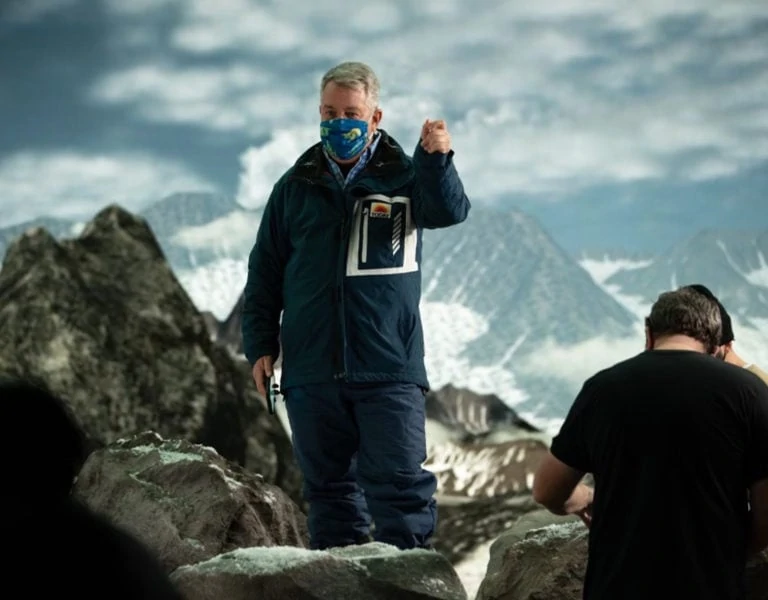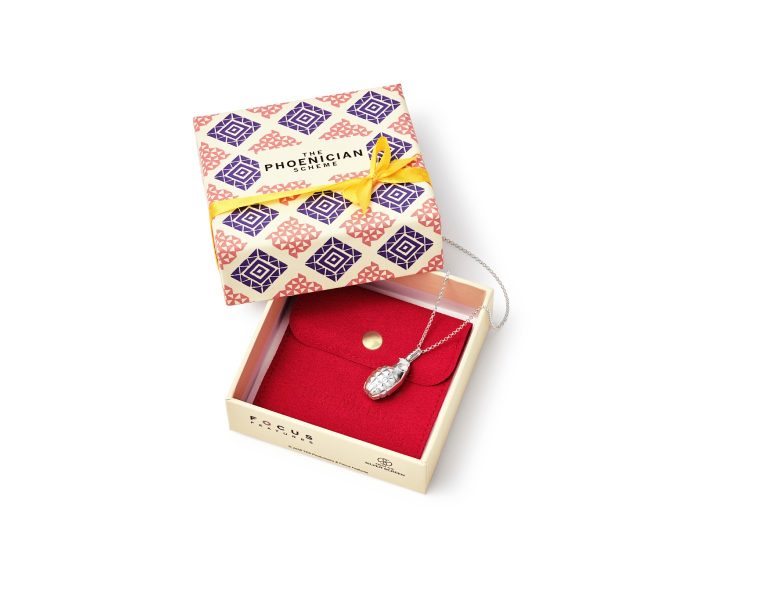Deep, dark secret
How far would you go to relive treasured memories with lost loved ones? AI meets the afterlife in a Black Mirror-esque short from the team behind Oscar-winning The Silent Child, including cinematographer Ali Farahani.
An incisive glimpse into grief, In Too Deep marks the latest collaboration between DP Ali Farahani and director Chris Overton, whose directorial debut about a deaf child born to a hearing family was crowned Best Live Action Short Film at the 2018 Academy Awards. The Silent Child’s writer and actor, Rachel Shenton (also Overton’s wife), returns to the screen for this new endeavour alongside Stephen Wight to portray parents Carol and Ben who are mourning the loss of their young daughter.
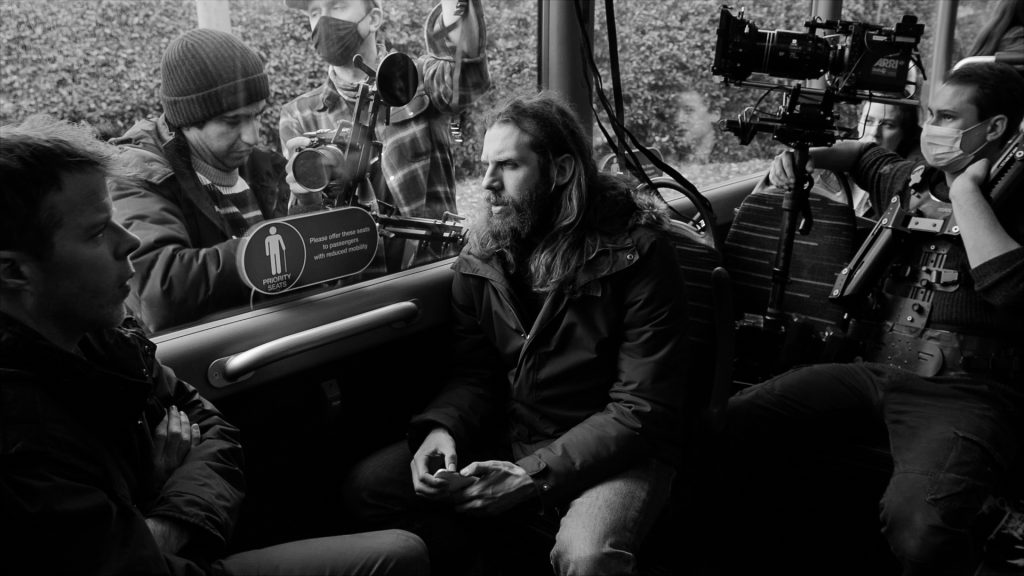
“The baseline of this story was grieving parents, and everyone deals with grief at some point of their life,” Farahani says. “As someone who doesn’t live in their own country, I’ve dealt with grief from a different angle.”
In Too Deep allowed the cinematographer to use his personal experience of loss to help shape the film’s creative approach. At the beginning of the film, viewers meet Ben watching a home video of his family at the seaside in happier times. “I was discussing the shot with Chris when suddenly, a picture came to my head from when I was grieving for my dad, who had died and I couldn’t be there,” he recalls. “I explained that picture to Chris, and he said, ‘That’s what we want.’”
Forging a strong working relationship over their last three projects together, Farahani and Overton have developed a mutual cinematic shorthand. This helped them pull off a limited prep and a shoot punctuated by pandemic-induced pauses.
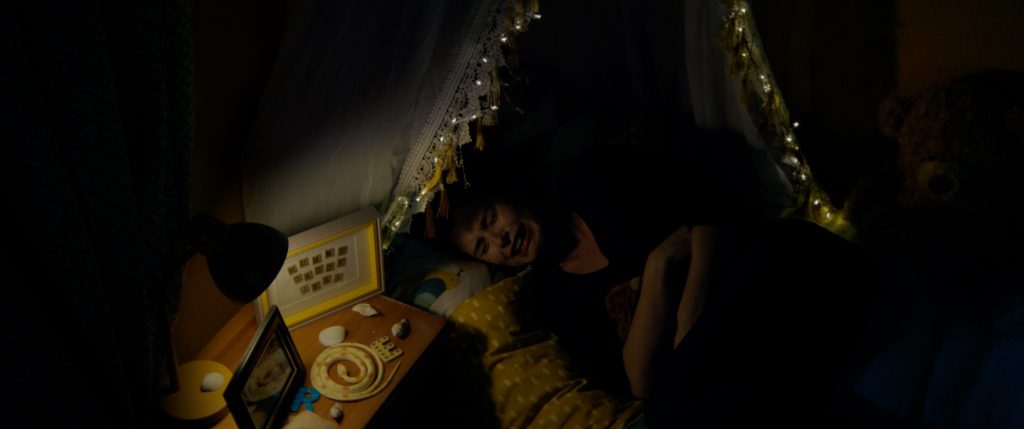
Crafting the right atmosphere for In Too Deep was crucial for Farahani and he advocated for long takes wherever possible to ramp up the tension. Another important aspect was the framing and composition of Carol and Ben’s characters, who were responding very differently to their daughter’s death.
“From the beginning, I suggested we had a bit of mathematical involvement in the film,” remarks Farahani. “We decided on a few key elements such as having symmetrical shots and separating the parents. They were moving in parallel journeys but with different ideologies, so we tried to avoid using the same composition or angle for both of them, especially when they were getting close to each other, to show the difference in their character perspectives. The composition was really following the story.”
The DP used his lensing to create instability in the picture to highlight the fragility of grief and the delicate nature of Carol and Ben’s relationship. “One of the things I really enjoyed experimenting with, with the Cooke anamorphic lens, was the distortion,” he remembers. “All of the backgrounds with that distortion gave the viewers a natural instability and I tried to use that as a tool to make the situation and atmosphere particularly unstable. When you’re grieving, one of the things you deal with is losing focus, and I channelled my own personal experience to create that atmosphere.
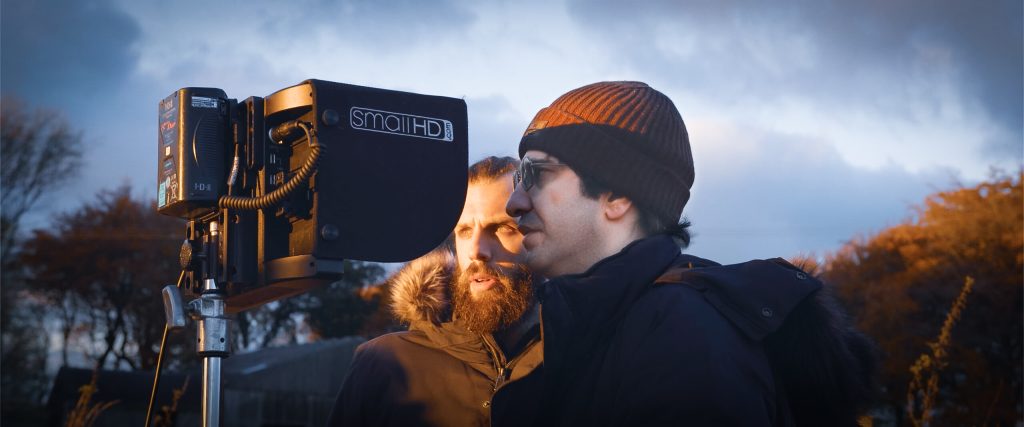
“I had to be really careful to choose the right lens and camera angle and level to create a sharper connection path for the audience to connect the story together because most parts of the story had to be told with picture rather than dialogue. It was important that the audience follow the story without any distractions, so simplifying and putting sublayers of the story in the background was the main creative key for me – especially in camera movements and long-take shots.
“Also, most of the shots are a really standard composition but if you look at the shots a little more deeply, you see they’re not actually stable. They never become stable until the end of the film – when we face an open ending, that’s when the viewer gets to sit back and think about the story and face the last twist of the story and make their judgment as the audience.”
Farahani paired the Cooke anamorphics with the ARRI Alexa Mini, although the home video footage was shot with a traditional handycam for added authenticity. Principal photography took place in Staffordshire, UK, and the DP was assisted by 1st AC and camera operator Neal Parsons and Steadicam operator Luke Oliver in the camera department.
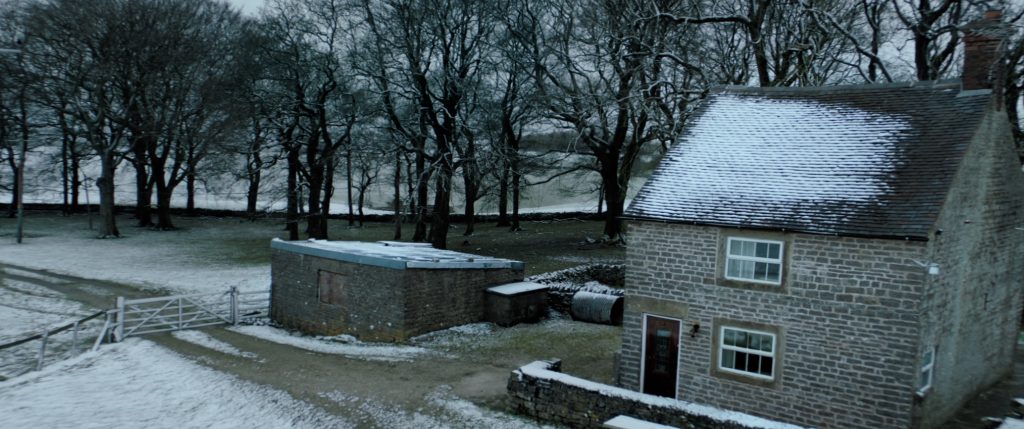
A lot of filming centers on Ben’s home, which came with a number of technical challenges – not least being that the house was supposed to be in the back of beyond, but the location the production settled on was actually surrounded by other properties. “We had to reveal that the house was in the middle of nowhere at the end of the film,” says Farahani. “We had to avoid shooting the window directly from the outside or inside when possible, so we had to choose the angles we shot very carefully, to show there is no neighbour near the house. (In the story, some noises appear to come from the neighbour’s house.) There were plenty of windows in the house and we had to use them as a light source as well. That was a big challenge – imagine you have to put a character next to the window, but you can’t show what is behind that clearly– you have to choose a different angle!”
Shooting anamorphic (widescreen) in the pokey property was tricky and for some scenes – for example, the birthday scene. There wasn’t enough space to film the whole scene there, so they’d have to partly shoot in another location. “We had to match the colour, the lighting, the angle, the shot – everything,” says the cinematographer. “In that respect, my gaffer, Louis Murrall, was amazing. He played a really important role, especially when it came to matching those things, and I was so lucky to have him on board. Also, Rachel Denning, the production designer of the film, did an amazing job to make it happen by matching everything and give the camera enough freedom to find the right angle.”
The other challenge of shooting in that location was using a variety of grip equipment such as the MiniJib, track and Steadicam. “I have to say that without the help and hard work of the camera crew and production team we would never have been able to achieve any of the movement shots because we needed more rehearsal and preparation time for camera to fix all errors. Therefore, having such a big support from the wholeteam made this experiment doable.”
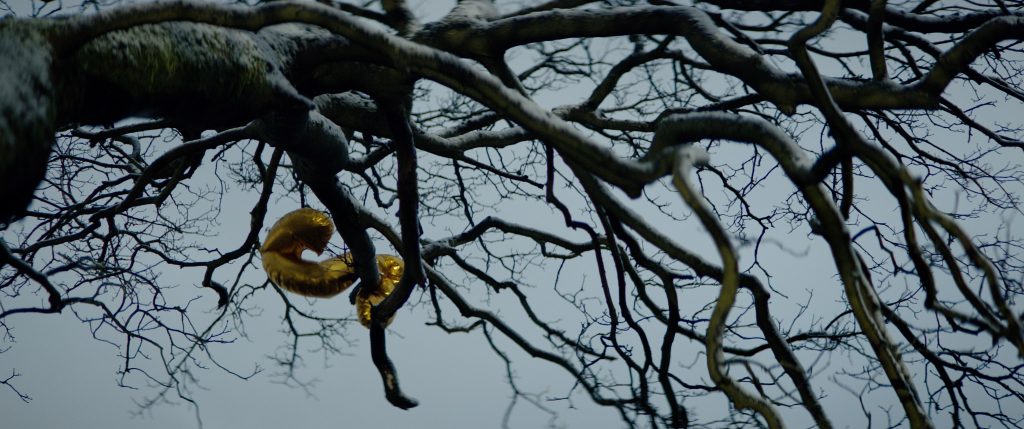
Farahani and Murrall opted for as much authenticity as possible in lighting In Too Deep. “Louis and I were talking about it a lot – we didn’t want to show off the lighting, but we wanted the picture to feel as real and believable as possible,” Farahani says. “We just wanted to expose what the atmosphere meant. We had some special lighting where the character is lying on the sofa but we didn’t want to exaggerate anything – we always had a limit. We didn’t want to put the lighting on top of the story because everything has to be the means of delivering the story and atmosphere we’re talking about.”
As well as lensing the film, Farahani pulled double duty as the post-production supervisor. The film’s use of primary colours was another key element in creating the atmosphere and one that was emphasised during the grade. “From the very beginning of the film, Chris wanted to use the colour as a sign,” the DP remarks.
“Grading always plays an important role especially when you have so many challenges during the shoot, and you can rely on it a lot, to create the originality of colour palette for the film; Finlay the colourist and I had to experiment different methods and techniques to achieve the right look for the film which fit the story remarkably.”
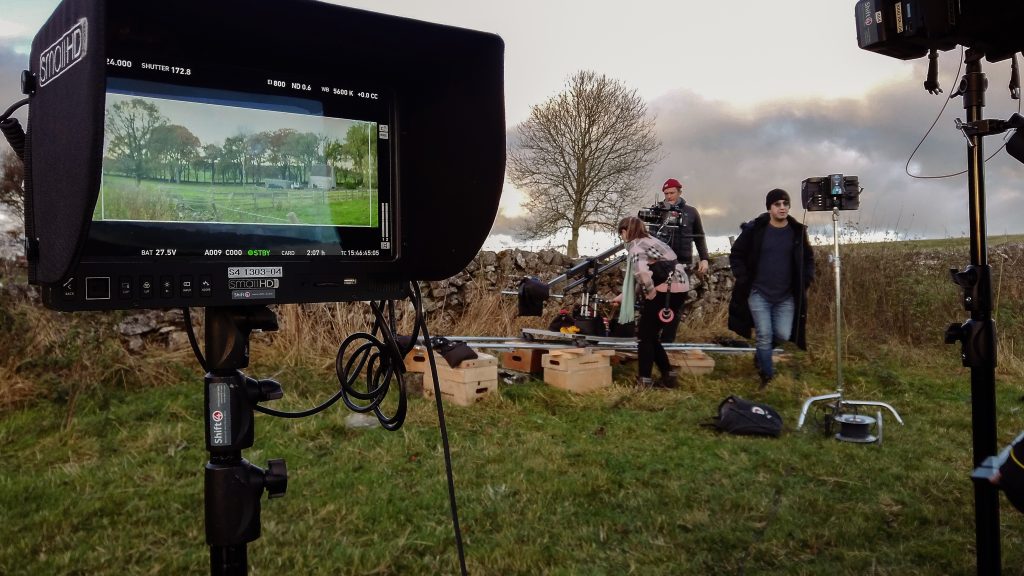
Working on post gives Farahani a unique perspective on the film compared to other DPs. “I always say to people, whenever I’m behind the camera, I’m editing the film in my head and it helps me to have a better understanding of the tools I have on set and how to use them to minimise the errors,” he explains. “It’s because I can imagine how the shots are going to cut and have more suggestions for the directors. For example, I have a clearer idea about the tempo when I do a long take or moving shot and use my post-production skills and knowledge to help shoot the scenes with VFX involved.”
For Farahani, some of his proudest work on In Too Deep is crafting the film’s distinctive visual language. He continues: “As well as using the right cinematic techniques to tell the story, my personal life experience and worldview has a big impact on how I frame the picture of a film too. On top of it being one of the best experimental experiences in technical terms for me, filming In Too Deep also gave me the opportunity to find my own visual accents which I think fit the story well.
“Grieving is something that everyone will deal with in a different [way]. You can talk or write about it a lot, but being able to picture that is what I am so proud of for my job in this film and it is a huge feeling of relief for me as someone who has dealt with this for a long time.”
